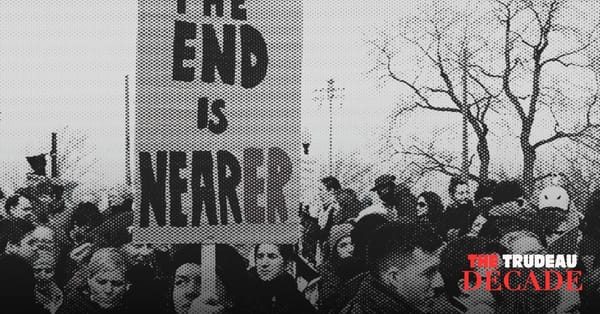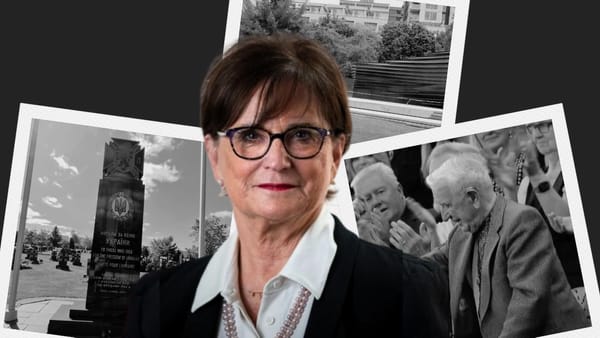Ontario’s political parties failed to bring a majority of voters out on election day. As a result, Doug Ford has grown his caucus and solidified his grip on the province for the next four years.
Disenfranchisement has been growing in the province for decades. Unlike the label apathy, which suggests that people simply don’t care, disenfranchisement means that there are forces that have been placed on individuals to stop or dissuade them from voting.
The results of crushing austerity, the trauma experienced by the pandemic, structural barriers to vote and lacklustre party platforms have disenfranchised more eligible voters than ever before in Ontario politics.
Ontario is far away from the heyday of voter turnout that surpassed 70 per cent, last achieved in 1971. The percentage of people who vote has steadily fallen, and last night, it hit an all-time low of just 43.03 per cent.
Fewer people voting means even fewer people decide who governs the province. The Progressive Conservatives grew their caucus despite receiving 433,561 fewer votes than in 2018.
The Liberals gained a seat, despite receiving 24,000 fewer votes than in the last election. The ONDP will remain the official Opposition, but are down nine seats from 2018.
Both Steven Del Duca and Andrea Horwath announced their resignations as leaders of the Liberals and ONDP respectively last night.
It should surprise no one that so many Ontarians are disenfranchised. Ford banked on it, refusing to talk to media during the campaign so as to avoid creating any controversies that might have moved people to the polls to vote against his party.
A perfect storm of factors: From transportation costs to the pandemic are enough to keep any reasonable person at home on election day, especially if they looked at the main parties and decided that they weren’t offering anything different enough to motivate them to get to the polls.
It also doesn’t help that the election happened in the middle of the week. TVO’s Steve Paikin posted several photos of poll station line-ups on election day, stating that he was impressed to see people spend hours in line to fulfil their democratic duty.
Spending an hour off work to stand in a line to vote isn't a luxury that most people are willing, or able, to take. There’s little question that a midweek election day where there aren’t enough polling stations to keep lines short plays a big role in voter suppression.
But disenfranchisement goes much deeper than simply being about whether or not someone is too busy to vote. That’s clearly a factor, but much more important is whether or not there is a path on offer that would materially improve someone’s life.
Clearly, the Liberals and the ONDP were incapable of convincing voters of this. And, judging by the low turnout for the PCs, Ford wasn’t exactly successful at this either.
Take, for example, the issue of long-term care. Both the ONDP and Liberals made their rallying cry to end for-profit care. In addition to not offering plans that demonstrated how they would do this, both parties must have forgotten how much trouble average people have with the public system these days.
COVID-19 battered an already strained system. When you tell people that the solution to long-term care is to make it more like public health care, you need to be confident that people think that the public healthcare system is operating well.
The reality, sadly, is that the underfunded public system is barely meeting people’s needs right now, and so parties were asking people to vote based purely on trusting that their party could do better.
This is impossible, especially if people remember your party being in power from 2003 to 2018, in the case of the Liberals.
Then there’s the housing crisis. As I wrote for The Maple, each of the parties’ housing promises were very similar. Where they diverged, like on rent control, the promises weren't nearly enough to actually help people.
Rather, promising to control rents at current rates just promises to cement today’s reality as tomorrow’s status quo. Mobilizing people to vote to stop things from getting worse than they already are, rather than for things to get better, is a recipe for disenfranchisement.
On lowering gas prices, it was clear that the ONDP thought this would move people to vote for them.
But the ONDP, which had been increasing its vote steadily since 1999, saw the bottom fall out of its support last night. They received 831,320 fewer votes than in 2018 and fewer votes than the Liberals, despite winning nearly four times as many seats as their competitor for second place.
The ONDP’s promise to regulate gas prices was unconvincing. They regularly cited Quebec as a jurisdiction where a regulatory agency sets prices, but gas in Quebec is no cheaper than it is in Ontario. Again, pocketbook issues need to be deep enough to actually mobilize voters.
As the affordability crisis hit young people particularly hard, neither the ONDP nor the Liberals promised to reduce costs that are wholly within their control, like tuition fees.
For me, this was where the problem with both campaigns was so obvious. They easily could have promised to eliminate tuition fees. It would have been a bold promise that absolutely would have mobilized younger voters.
It also would have been credible: It’s something the Ontario government could do in a matter of weeks. But the parties’ refusals to promise this, and to instead focus on minor reforms that barely differentiated them from the PCs was a strategic error.
Of course, another key driver of disenfranchisement is the first-past-the-post electoral system, which produces false majorities.
In 33 of Ontario’s 124 ridings, the winner won by a margin that was higher than 10,000 votes. What point is there of voting if the winner wins by a margin that large, if you don’t support them? To make a point? To be counted? Not everyone tears up with pride as they stare at long line-ups at polling stations.
It isn’t enough to tell someone that it’s their duty to vote – they have to actually feel like their vote matters.
A majority of Ontarians who cast ballots on election day voted against the PCs. And yet, the opposition parties' combined seat count of 41 pales in comparison to Ford’s 83 seats.
The PC machine understands these flaws in the first-past-the-post electoral system and exploits them.
As the party that has governed Ontario the longest, they know the system better than anyone else. They go riding by riding and mobilize enough local support to allow them to ride into power.
Until the system changes, or until the Liberals or ONDP fundamentally change the structure and strategy of their parties (which is impossible, or else they’d cease to exist), the PCs will continue to win.
And they’ll have voter suppression driven by disenfranchisement to thank for that.
Nora Loreto is The Maple's Ontario election reporter. She is the author of Spin Doctors: How Media and Politicians Misdiagnosed the COVID-19 Pandemic.








Member discussion